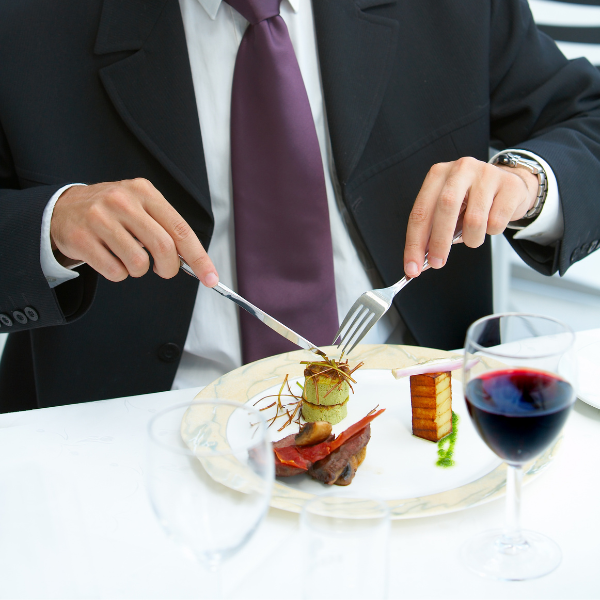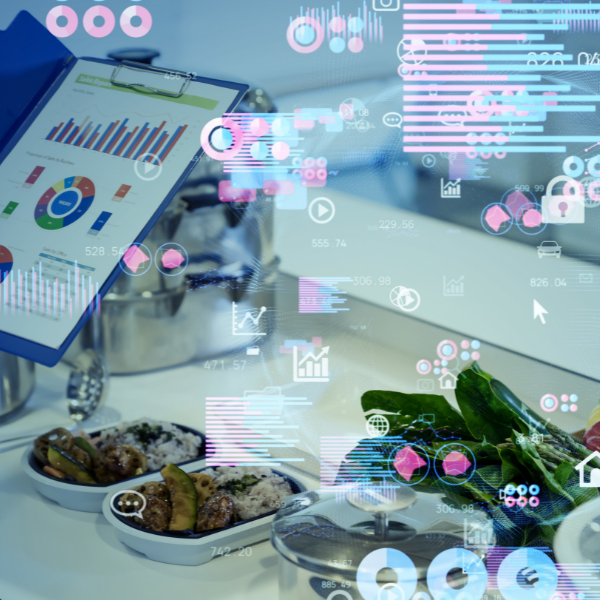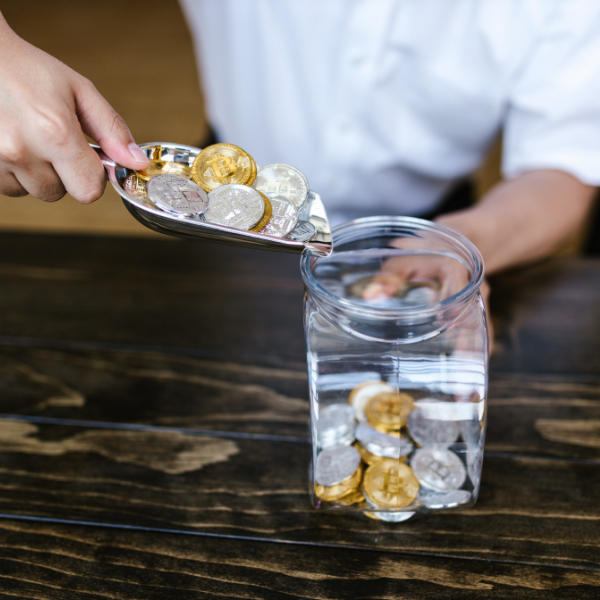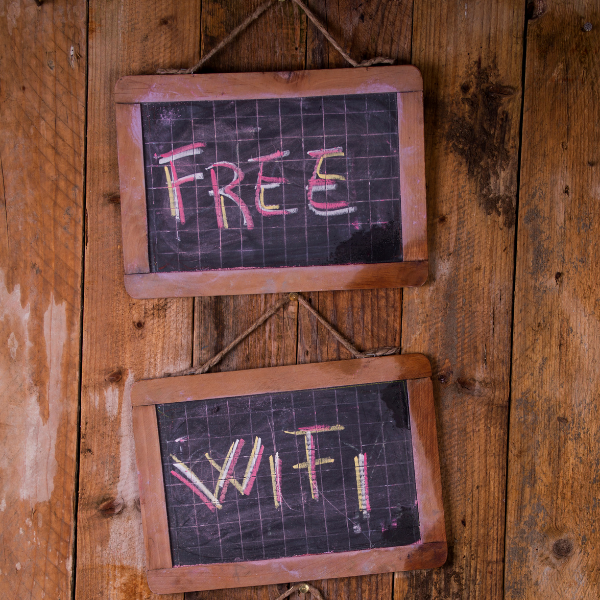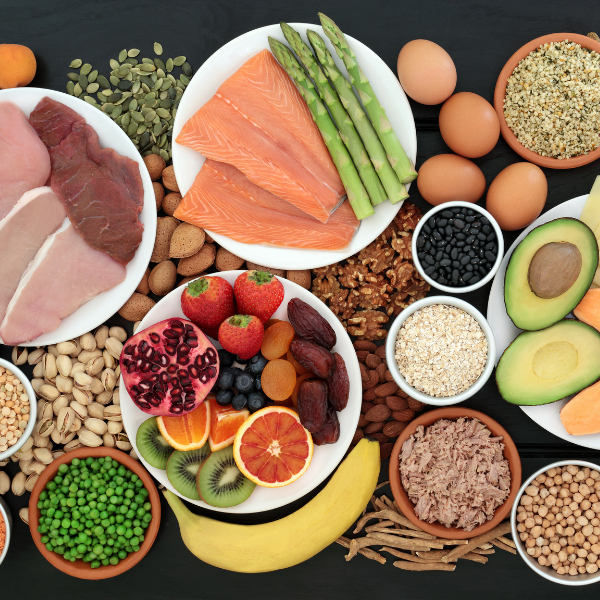“Can you put take out containers in the microwave?” or “Is this container safe for hot foods?” are questions you may oftentimes ask yourself when packaging take out orders. The answers to these questions will help you understand which materials should be used when packing certain types of foods to eliminate messy accidents during transport. Instead of having to constantly look up which container materials are appropriate for your meals, you can use our guide to help you decide what type of container is best for each dish.
Plastic
Known for being rigid and leak-resistant, plastic containers are extremely durable. They can take a few bumps in the road while still keeping your meals protected and intact. Great for hefty meals like pasta or rice dishes, this material can hold the weight of large to-go orders. However, not all plastic containers can endure the same temperatures.
Polyethylene Terephthalate (PET)
PET containers are often clear, durable, and not easily punctured, which means they can protect your foods from outside contamination. These take out boxes are also recyclable if disposed of properly. When exposed to high temperatures, food-safe PET can leach the contaminant, antimony, into your foods. On the other hand, PET containers are a good to-go dessert packaging or for any cold foods such as salads and wraps.
PET Temperature Limits:
- Up to 120°F
Use PET containers for:
- Packaging cold foods
- Storing meals in the fridge or freezer
Polypropylene (PP)
Used in the foodservice and healthcare industry, PP containers are considered to be very strong and can resist impact, making them ideal for transporting or customers that are on the go. Like most plastics, this material is recyclable, leak-resistant, and sturdy. Their strength makes them ideal to withstand hot and cold temperatures so you can package a variety of meals.
PP Temperature Limits:
- Minimum temperatures: -4°F to 14°F
- Maximum temperatures: 212°F to 266°F
Use PP containers for:
- Packaging hot and cold foods
- Reheating meals in the microwave
- Storing meals in the fridge or freezer
Polylactic Acid (PLA)
Used in the foodservice and healthcare industry, PP containers are considered to be very strong and can resist impact, making them ideal for transporting or customers that are on the go. Like most plastics, this material is recyclable, leak-resistant, and sturdy. Their strength makes them ideal to withstand hot and cold temperatures so you can package a variety of meals.
PLA Temperature Limits:
- Up to 140°F
Use PLA containers for:
- Packaging cold foods
Bagasse
Made from sugarcane pulp, bagasse containers are commercially compostable and biodegradable, making it the perfect option for eco-friendly restaurants. It is naturally grease-resistant and can retain the heat of your meals to a certain extent. This eco-friendly food packaging material can withstand a wide range of temperatures so you can package any type of meal.
Bagasse Temperature Limits:
- Around -13°F to 428°F
Use Bagasse containers for:
- Packaging hot and cold foods
- Reheating meals in the microwave
- Storing meals in the fridge or freezer
Foam
Foam containers or polystyrene foam are used as vessels for take out containers, drinks, and retail packaging. They are lightweight and fairly sturdy and can be torn if not handled properly. The downside to these is that they are very harmful to the environment and are not accepted by curbside recycling programs because they are often contaminated with food, making them difficult to clean. Because they are harmful to the environment, an increasing amount of cities and states, such as San Francisco and New York, have banned foam containers or are in the process of banning them.
Use foam containers for:
- Storing meals in the fridge
Paper
Many operators like to choose paper containers because they are available in a variety of colors that match the color scheme of their establishment. Some paper take out containers for restaurants even have a grease-resistant lining to prevent oils from soaking through and creating a mess. They retain heat fairly well but don’t expect paper containers to keep your food warm for an extended period of time. However, most are recyclable and eco-friendly. When using paper containers, check to see if they are microwave-safe. For example, paper containers with a PP liner are microwave-safe, but paper containers with a PE liner are not.
Paper Temperature Limits:
- Temperature limits depend on the type of plastic lining. Ask your vendor about your product’s temperature limit.
Use paper containers for:
- Packaging hot foods
- Reheating meals in the microwave (if microwave-safe)
Aluminum
Aluminum containers allow prepacked entrees to be reheated in the oven and are typically used for packaging a large amount of food for take out or catering events. These containers are preferred by caterers because they find it convenient to cook dishes in the oven and simply take them out for serving all in the same vessel. Plus, they’re grease-resistant and flexible, making them great for holding hefty dishes.
Aluminum Temperature Limits:
- -20°F to 400°F
Use aluminum containers for:
- Baking dishes in the oven
- Storing meals in the fridge or freezer
- Packaging hot and cold foods
Advantages of Tailored Food Packaging
In addition to understanding the right materials for packaging different foods, incorporating custom food packaging into your strategy can greatly benefit your business. Custom food packaging goes beyond practicality; it enhances your brand image, ensures better customer satisfaction, and provides an opportunity to stand out in a competitive market. Here's how:
1. Brand Recognition
Custom packaging with your logo, tagline, or brand colors can create a memorable impression on your customers. When people see your unique packaging, it reinforces your brand identity and helps them associate positive experiences with your food. Over time, this increases brand loyalty and word-of-mouth referrals.
2. Improved Customer Experience
Tailored packaging ensures your food arrives in the best condition possible. Custom features like compartments for sauces or vented lids for steam release can make meals more enjoyable for your customers, improving their overall dining experience.
3. Sustainability Appeal
Custom food packaging can also reflect your commitment to sustainability. By choosing eco-friendly materials such as PLA or bagasse , you can align your brand with environmentally conscious values, which is increasingly important to modern consumers. Highlighting these choices on your packaging can further boost your brand's appeal.
4. Enhanced Product Safety
With the right customization, your food packaging can ensure optimal safety for hot and cold foods. For instance, customized PP containers with leak-resistant seals are ideal for soups or curries, while custom aluminum trays can prevent spills during transport for baked dishes.
5. Marketing Opportunity
Your packaging can serve as a mobile advertisement. Whether customers carry it in public or share pictures of their meals online, your brand gets visibility. Incorporating QR codes or social media handles onto your custom packaging encourages digital engagement, helping you connect with your audience on multiple platforms.
6. Cost Efficiency
Custom food packaging can be designed to optimize material usage and reduce waste. Instead of one-size-fits-all containers, you can create packaging tailored to the size and shape of your portions, lowering costs and reducing environmental impact.
By combining material knowledge with custom packaging, you ensure not only that your food stays fresh and safe but also that your brand leaves a lasting impression on your customers. This blend of functionality and aesthetics makes custom food packaging an essential investment for any food business.

Eco-Friendly Packaging Guide
As the food industry increasingly emphasizes sustainability, choosing eco-friendly packaging has become an essential consideration for businesses. In addition to selecting the right materials and incorporating custom designs, opting for environmentally responsible packaging solutions can help your business reduce its environmental footprint while appealing to eco-conscious consumers. Here's a quick guide to eco-friendly packaging options and their benefits:
1. Packaging Tips for Sustainability
Minimize Excess Material : Use packaging that fits your portions precisely to reduce waste. Custom options can ensure you're not overusing resources.
Switch to Reusable or Compostable Options : Encourage customers to reuse durable containers like PP plastic or choose compostable materials like PLA and bagasse to reduce waste.
Label Your Packaging : Clearly mark packaging as recyclable, compostable, or biodegradable. Educating customers on proper disposal can amplify the environmental benefits.
2. Benefits of Eco-Friendly Packaging
Reduces Environmental Impact : Choosing biodegradable and compostable materials minimizes waste and helps combat pollution.
Meets Consumer Expectations : Modern customers are increasingly drawn to brands that prioritize sustainability. Offering eco-friendly packaging reflects your commitment to environmental stewardship.
Supports Your Brand Image : Highlighting your use of sustainable packaging can strengthen your brand's reputation as a socially responsible business.
Complies with Regulations : With many cities and states implementing bans on materials like polystyrene foam, switching to eco-friendly packaging keeps your business compliant with evolving regulations.
3. Eco-Friendly Packaging and Customization
Combining custom designs with eco-friendly materials creates a winning strategy for your business. Customizable, sustainable packaging options, such as branded bagasse boxes or recyclable PP containers , let you showcase your brand while staying green. Including phrases like "Eco-Friendly" or "Made from Renewable Resources" can further emphasize your commitment to sustainability.
By incorporating eco-friendly packaging into your operations, you align your business with modern values, appeal to a broader customer base, and contribute to a healthier planet—all while ensuring your food stays fresh and delicious.

Home Compostable Packaging: A Step Towards Sustainability
In the journey towards environmentally responsible food packaging, Home compostable packaging stands out as an innovative and impactful solution. Unlike industrial compostable materials, which require specialized facilities, home compostable options break down naturally in backyard compost bins, making them convenient for eco-conscious customers. Incorporating such packaging into your strategy not only supports the environment but also adds value to your brand. Here are some of its benefits:
-
Environmental Impact Reduction
Reduces waste sent to landfills.
Minimizes the use of non-renewable resources.
Prevents microplastic pollution by breaking down into organic matter.
-
Convenience for Consumers
Customers can dispose of packaging in their home compost bins without the need for industrial facilities.
It aligns with the growing interest in zero-waste living.
-
Brand Enhancement
Reflects a commitment to sustainability, which resonates with eco-conscious consumers.
Adds a unique selling point, setting your business apart from competitors.
Best Practices for Using Home Compostable Packaging
Educate Customers : Include labels or instructions on your packaging, such as “Home Compostable” or “Compost Me at Home,” to inform customers about proper disposal.
Pair with the Right Foods : Use home compostable materials like bagasse or PLA-coated paperboard for dishes that require grease resistance or heat retention.
Collaborate with Suppliers : Ensure your home compostable materials meet certification standards such as TÜV Austria or OK Compost Home.
How Home Compostable Packaging Complements Custom and Eco-Friendly Options
Incorporating home compostable packaging into your strategy alongside custom designs and eco-friendly options enhances your environmental impact and brand appeal. For example:
A custom-branded bagasse container combines functionality, sustainability, and a personalized touch.
Eco-conscious phrases like "This package nourishes the Earth!" on compostable materials reinforce your green branding.
Bringing It All Together: The Future of Food Packaging
Choosing the right food packaging involves balancing functionality, sustainability, and brand appeal. Understanding the temperature limits and properties of materials like plastic, aluminum, bagasse, and PLA ensures that your food stays fresh, safe, and intact during storage or transport. Incorporating custom food packaging allows you to elevate your brand, improve customer experience, and reduce waste. Additionally, prioritizing eco-friendly and home compostable packaging demonstrates your commitment to environmental responsibility, appealing to today’s eco-conscious consumers.
Ready to transform your packaging game? Explore our catalog for a full range of sustainable and customizable food packaging solutions. Whether you’re looking to enhance your brand with tailored designs or transition to greener practices, we’re here to help you to have a packaging strategy that not only protects your food but also supports a greener planet and builds customer loyalty.








